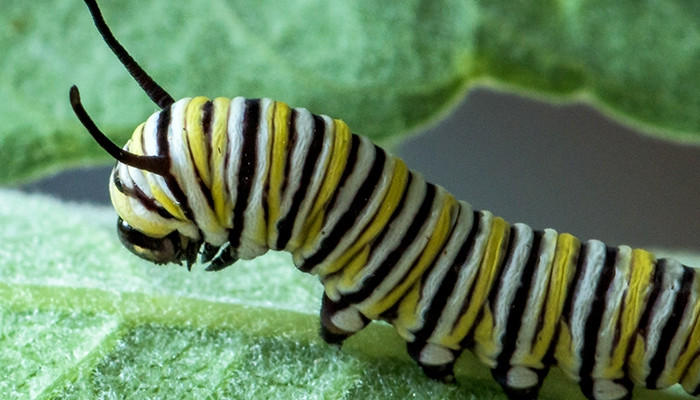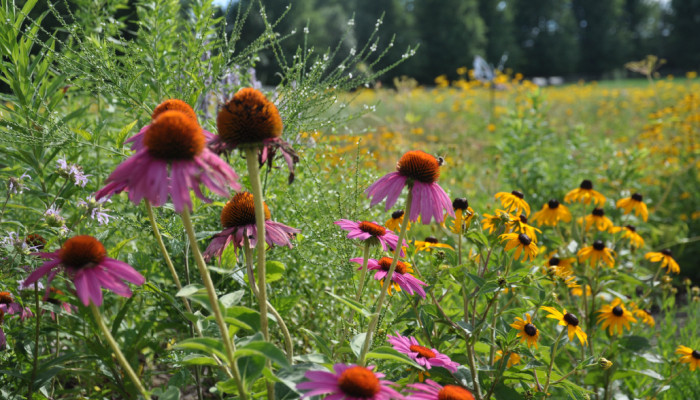Restoring Native Habitat Through Community Action
In the heart of Linn County, Iowa, a remarkable transformation is taking flight. Monarch Research is spearheading an initiative to revitalize monarch butterfly populations while simultaneously restoring native habitats and replenishing the region's tree canopy. Through innovative programs like Monarch Zones, Native Oasis, and Planting Forward, we are weaving a tapestry of biodiversity, connecting communities with nature, and fostering a new generation of environmental stewards. From city streets to sprawling rural landscapes, Monarch Research is sowing the seeds of ecological resilience, one native plant and tree at a time.


Announcing: One Child, One Tree - Growing Together! An innovative program that aims to foster a deep connection between children and nature by offering complimentary native trees to parents or grandparents in Linn County. Click here to learn more!
Latest News & Events
Get Involved!

One Child One Tree Program Launches on Arbor Day
May 09, 2025

We Have a Book Club!
May 09, 2025

More Monarchs Wintered in Mexico
May 09, 2025
Our Programs
See how we make an impact and get involved.

Mighty Acorn Society
Join the Mighty Acorn Society and be part of a transformative initiative in Linn County, where you can nurture native Iowa oak trees from acorns to thriving saplings. As a member, you’ll receive everything you need to cultivate these vital trees while contributing to ecological restoration and community beautification. Together, we can create a lasting legacy of sustainability and natural beauty for future generations.

Monarch Zones
The Monarch Zones (MZs) program helps individuals and communities to become active participants in the conservation of monarch butterflies. With tools like BioTents™ and Outdoor Lifecycle Kits, and expert support, anyone can create pollinator-friendly habitats. Join the growing network of Monarch Zones and experience the wonder of raising monarchs while contributing to the repopulation of these iconic butterflies

Planting Forward
The Planting Forward initiative began after the August 10, 2020, derecho devastated Cedar Rapids, IA, destroying over 50% of the tree canopy and damaging 8,000+ homes. Its goals are to replant Linn County with native trees and educate residents on tree care and the benefits of native species to the environment, pollinators, and people.

1,000 Acre Plan
The 1,000 Acres Pollinator Initiative is transforming public lands across Linn County into vibrant pollinator habitats, ensuring a future where bees, butterflies, and other vital species can thrive. Through a collaborative effort with local governments and support from Monarch Research, the program restores parks, trails, and golf courses with native prairie plantings, creating spaces that nurture biodiversity and beauty.

1,000 Mile Pilot
The 1,000 Mile Pilot transformed 1,000 miles of Linn County roadsides into pollinator habitats. Led by Monarch Research and supported by local partners, the project planted native mini-prairies, enhancing biodiversity and reducing maintenance costs. This innovative program demonstrates how underutilized public lands can support pollinators and serve as a model for sustainable roadside management.

Woodlands Native Tree Marketplace
Woodlands Native Tree Marketplace™, a complement to our Planting Forward™ initiative, offers year-round access to high-quality native trees at nursery-direct prices. Inspired by the 2020 derecho and the urgent need to address climate change, Woodlands empowers Linn County residents to rebuild a resilient tree canopy.

Our Mission
Our mission is to make Linn County a national model for pollinator and forest conservation by rebuilding habitat and planting trees on public and private lands, supporting the recovery of key species like the monarch.


Our Vision
Our Vision is to create a movement in Linn County to restore native plants and trees on land that has experienced significant ecological loss, fostering a vibrant and resilient ecosystem that supports a wide variety of plants and animals while enriching the community's connection to nature.
Restore Native Habitat
Partnering with ISU researchers, MRP’s Pollinator Zones™ are committed to expand native habitat for pollinators on public and private lands in Linn County, Iowa.
Save the Monarchs
Our objective is to develop Monarch Zones® (MZ)—homes, cities, and counties that are committed to our goal of repopulating the butterfly population. We have established close to 200 Monarch Zones in and around Linn County, Iowa
Starting Locally, then Expanding
The MRP is working with the eastern Iowa governments and citizens to establish monarch and habitat models that can be replicated in other communities
Want to know what we're up to? Sign up for our newsletters!


